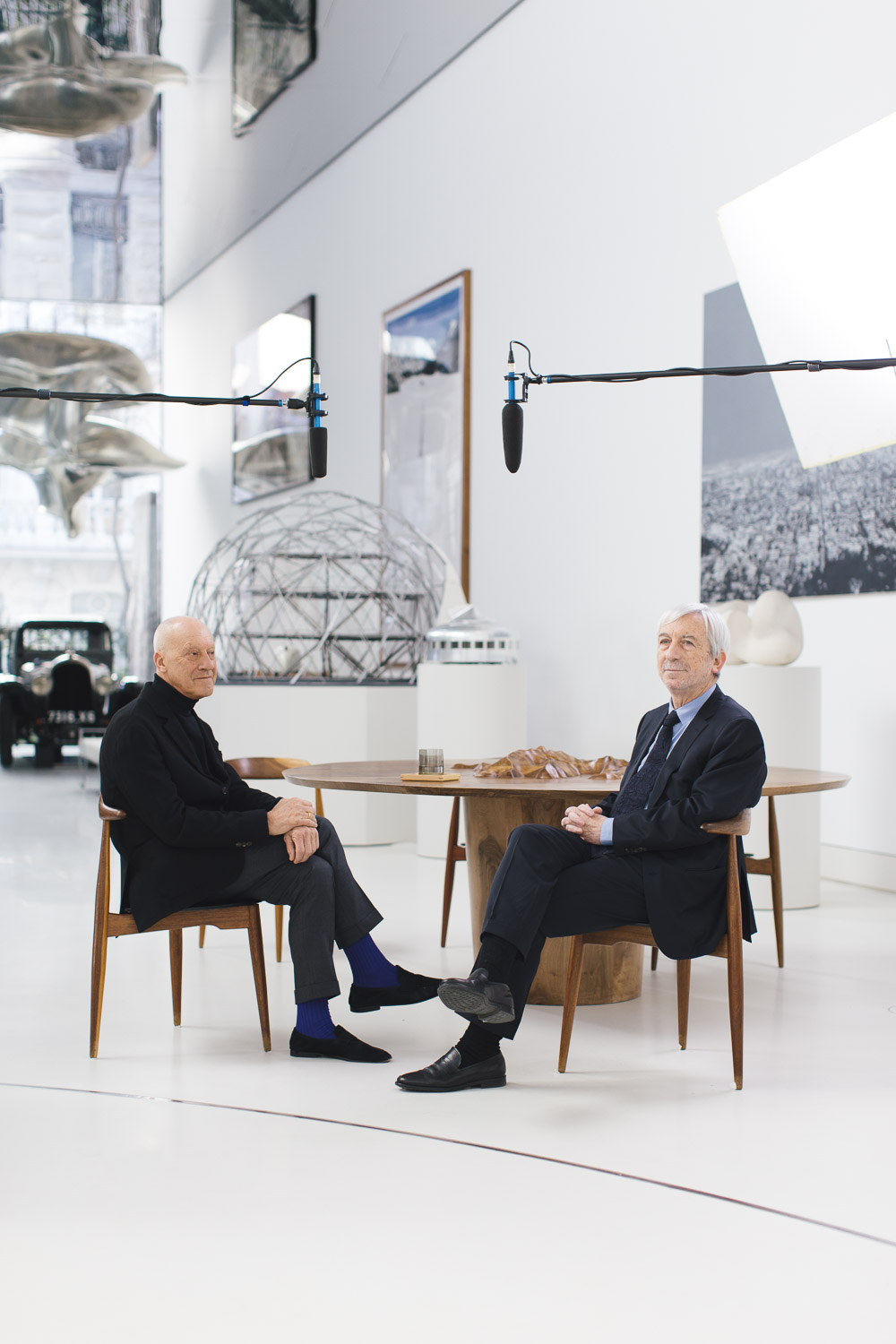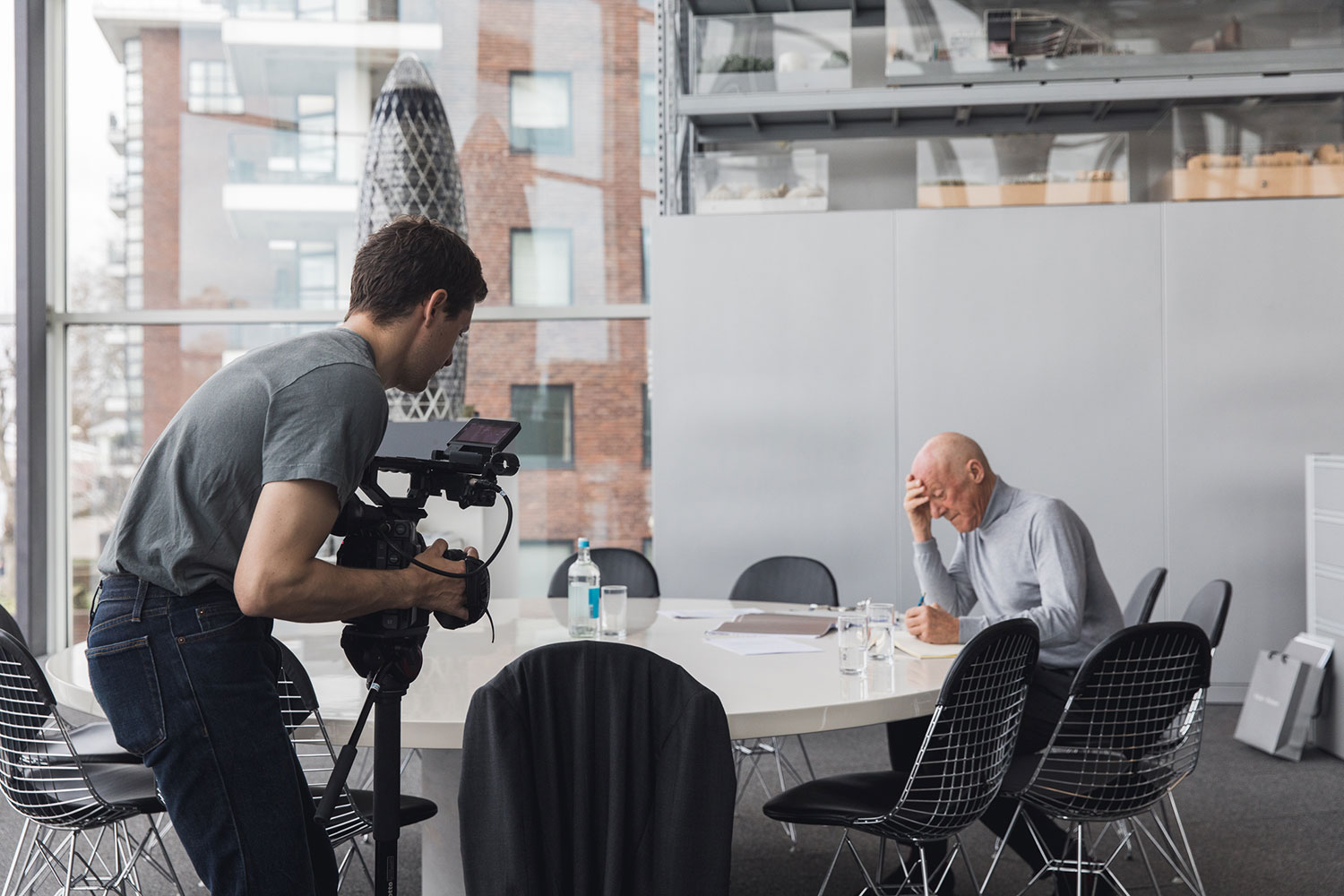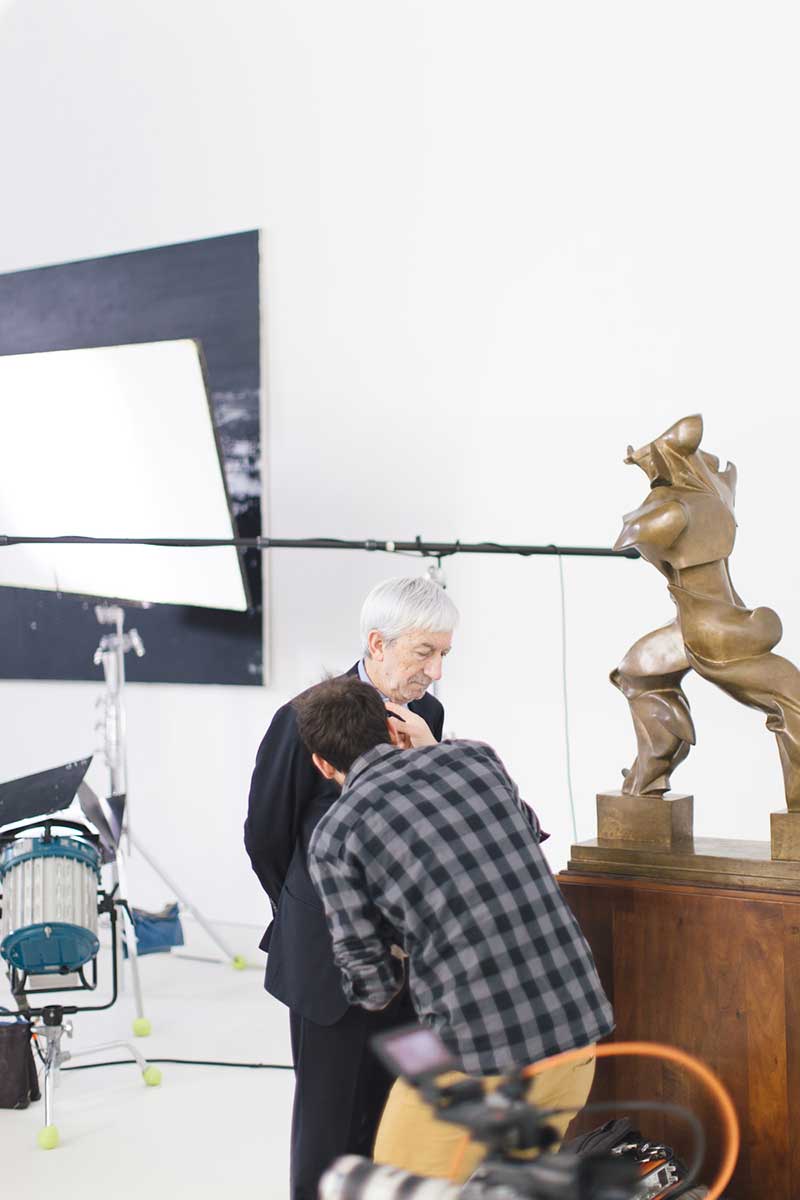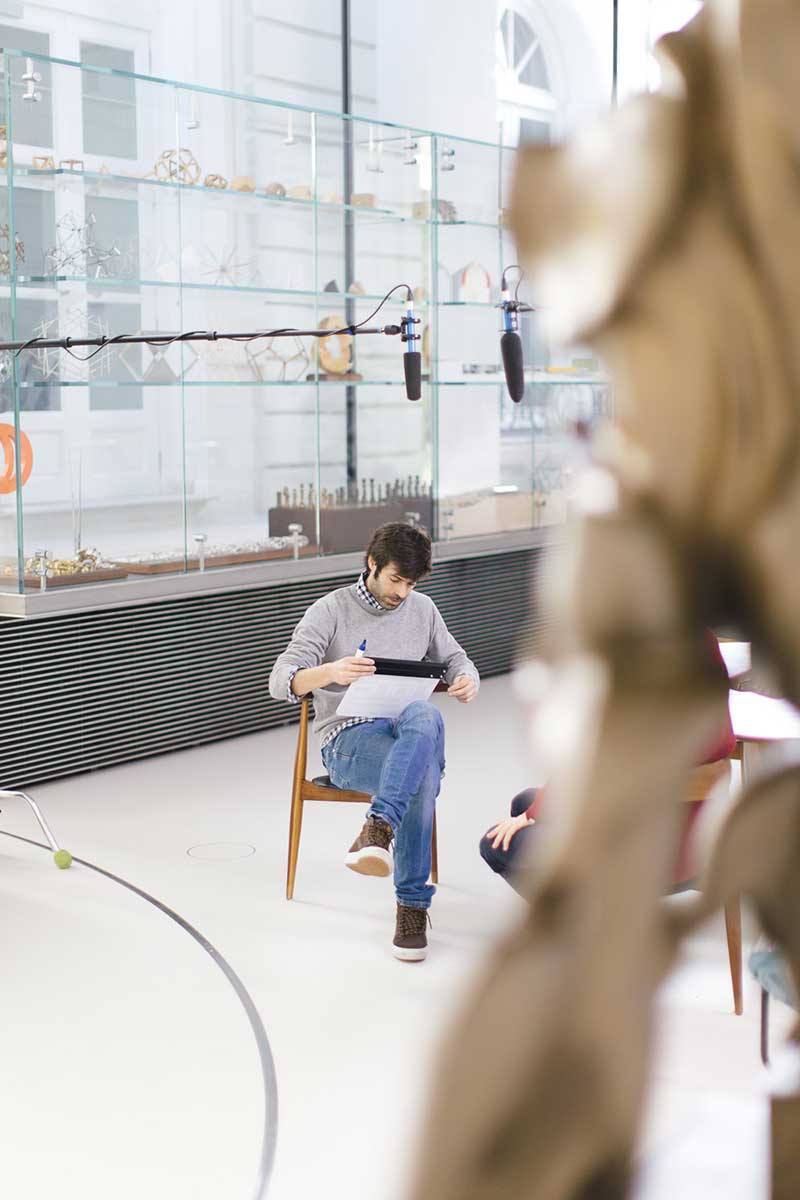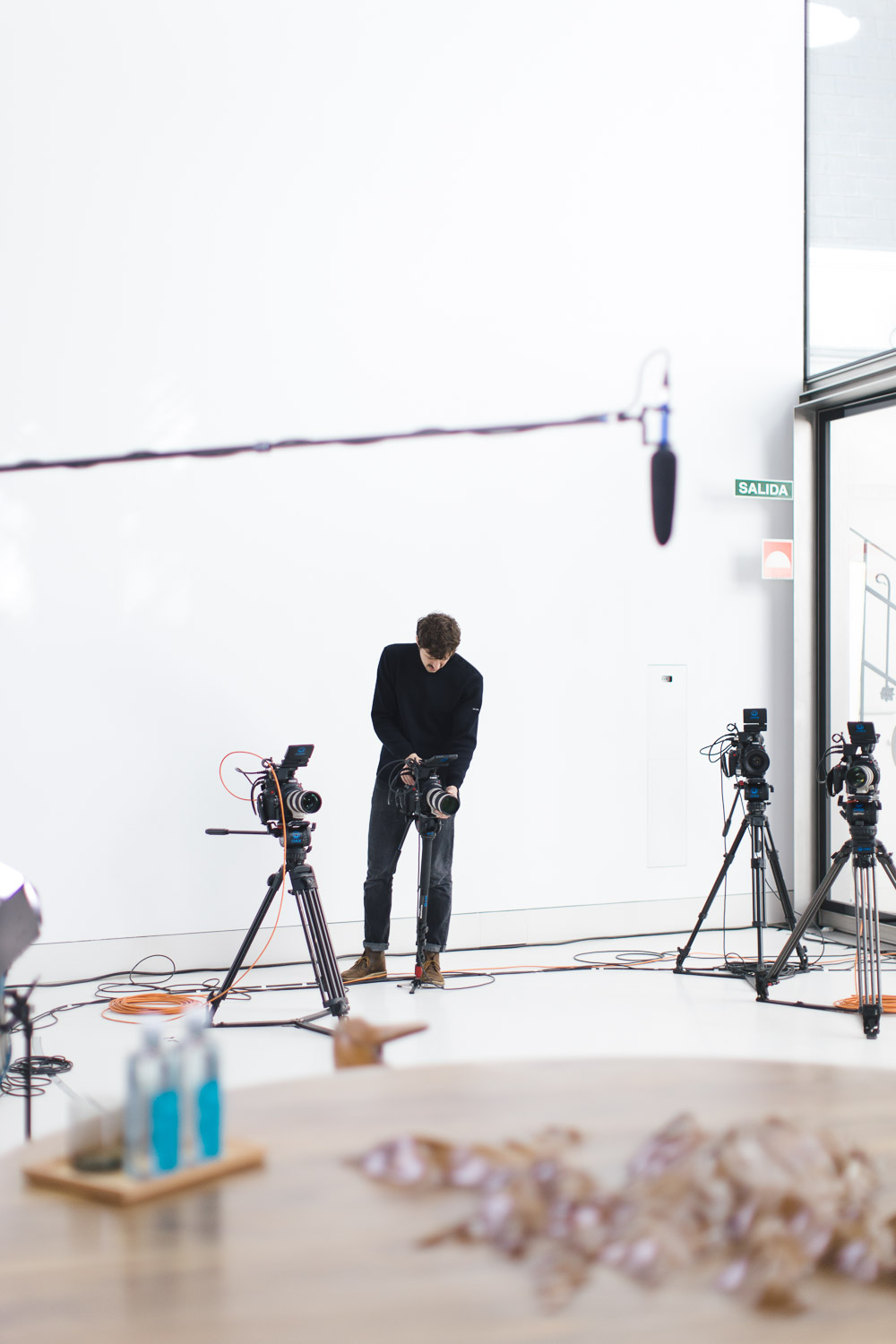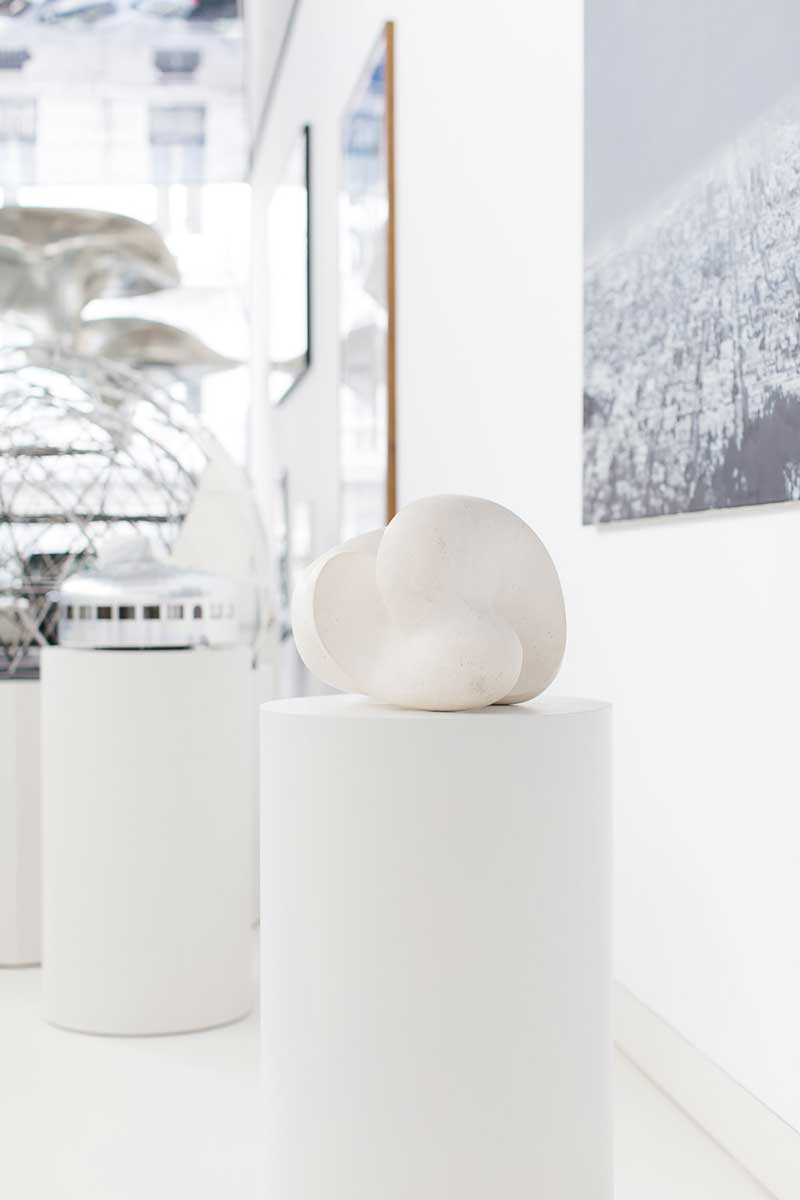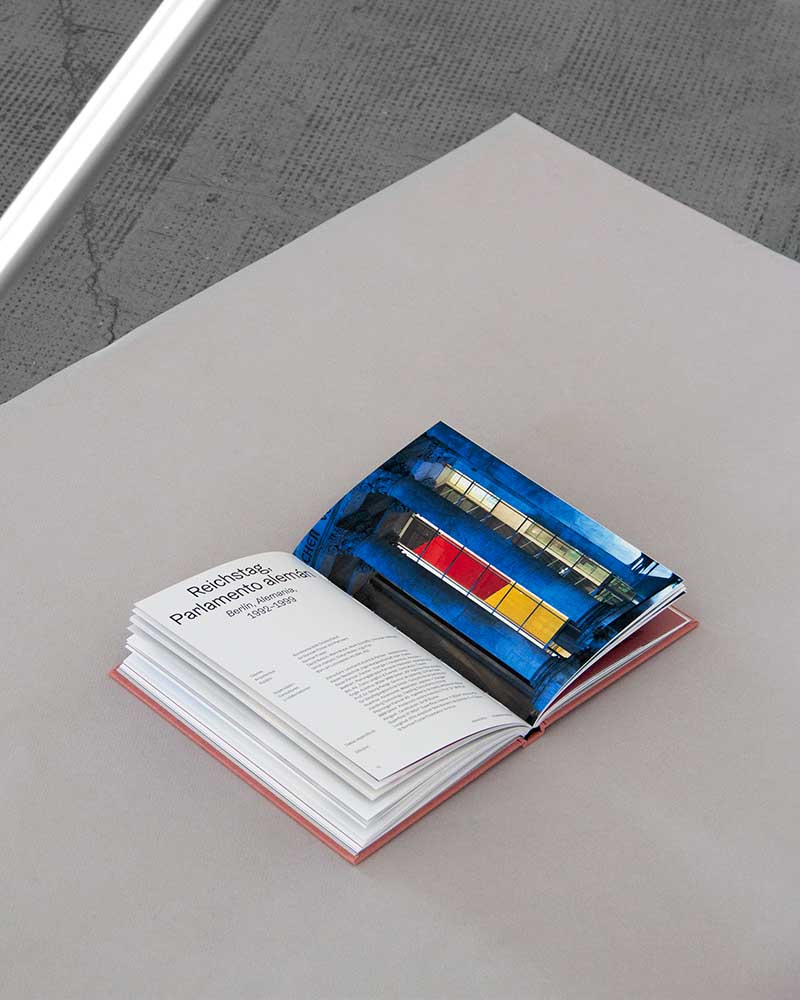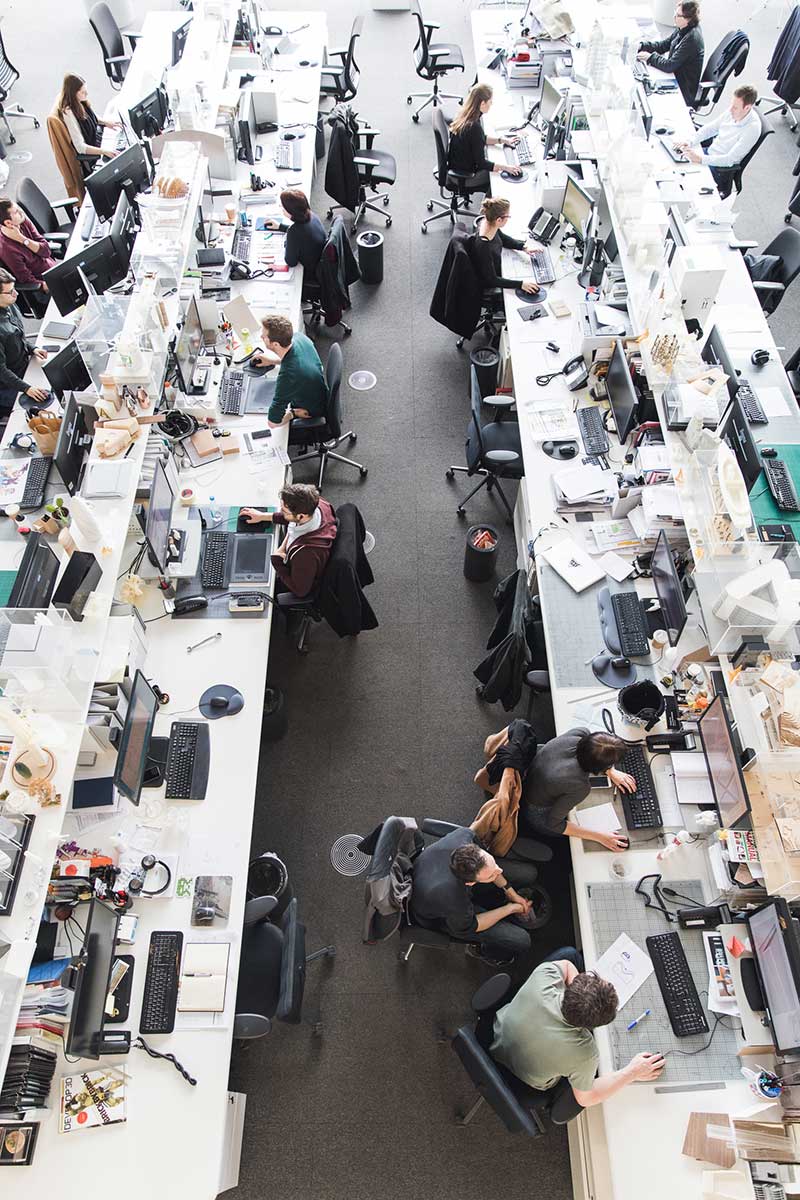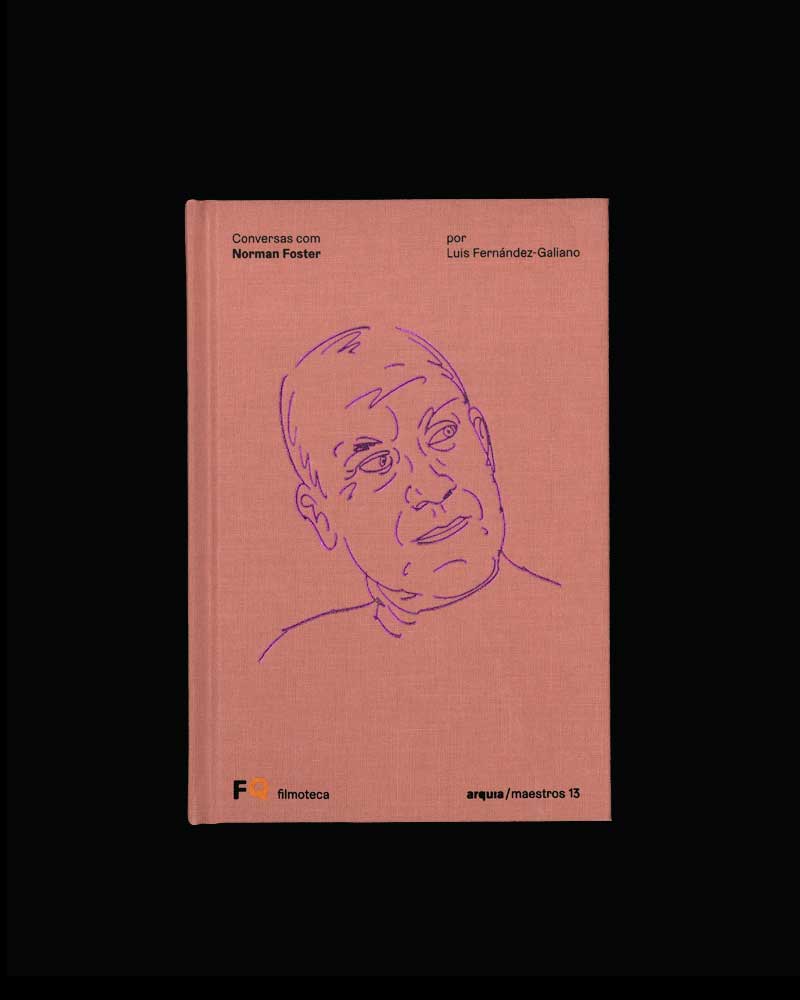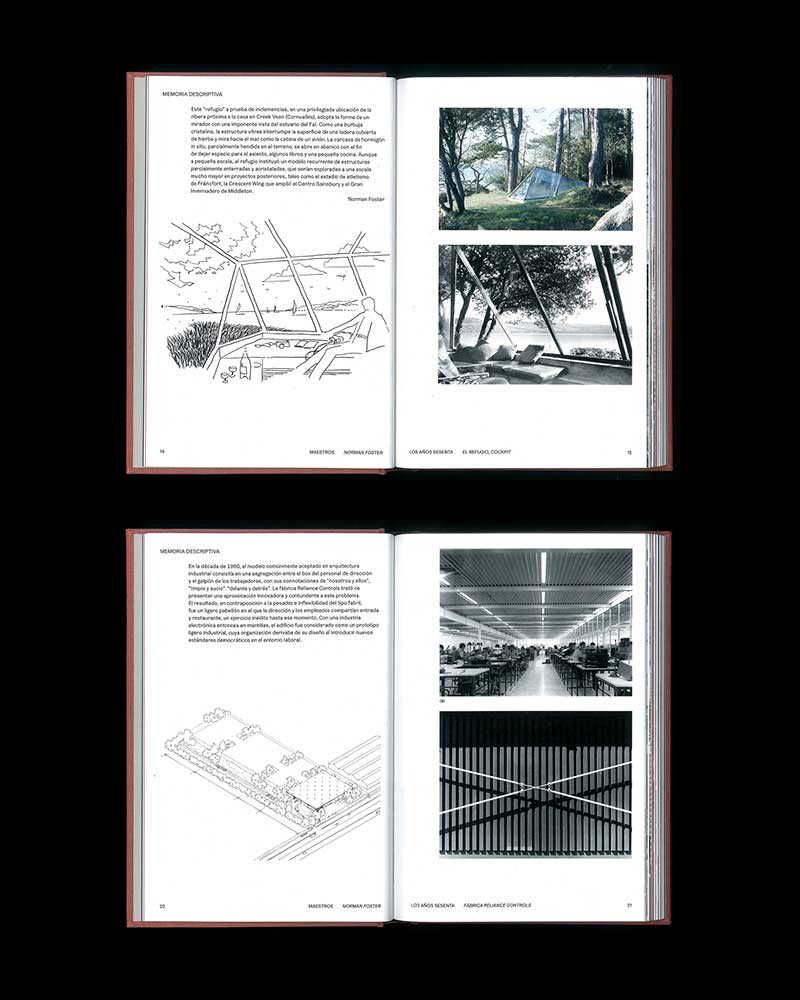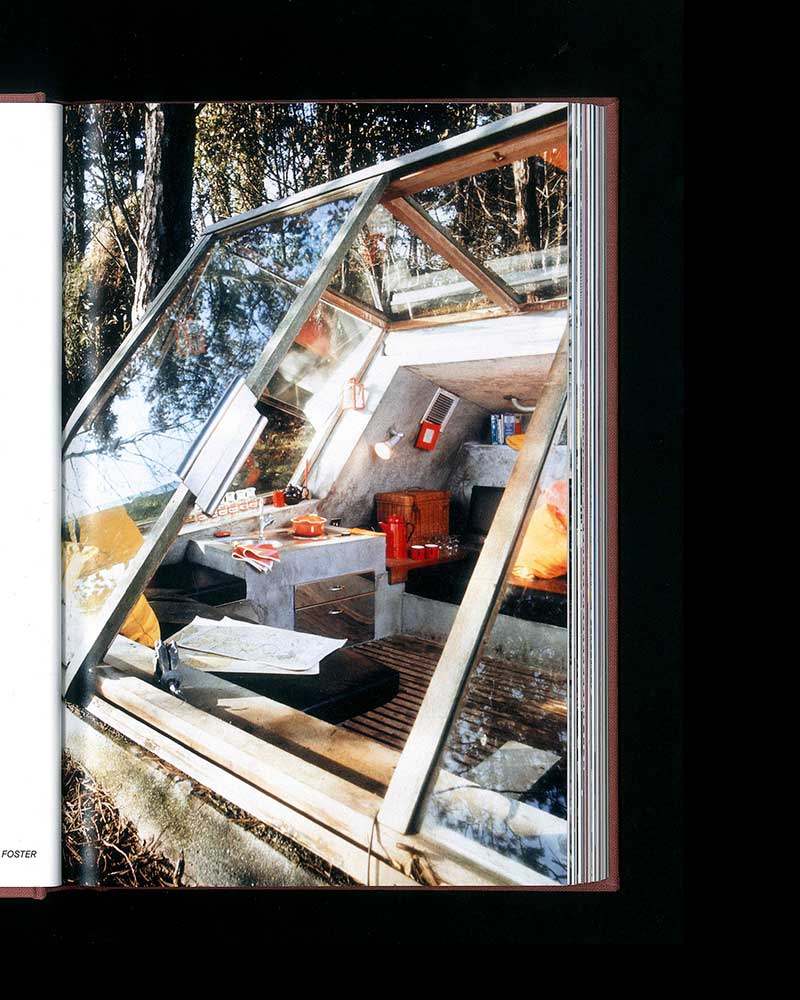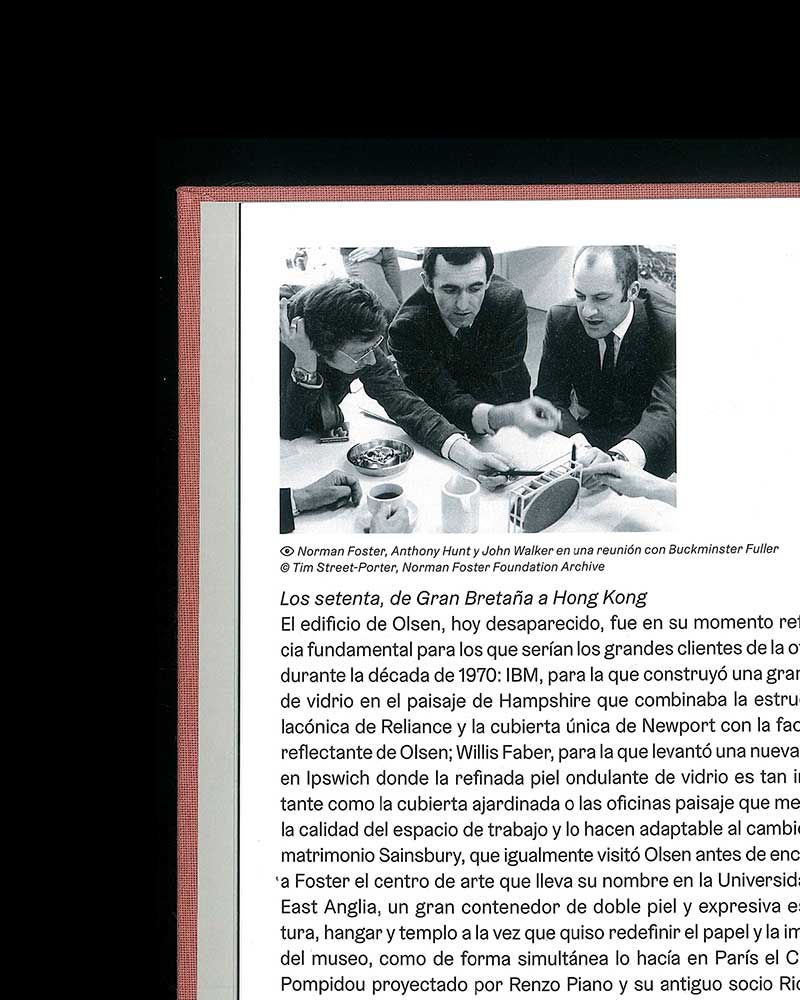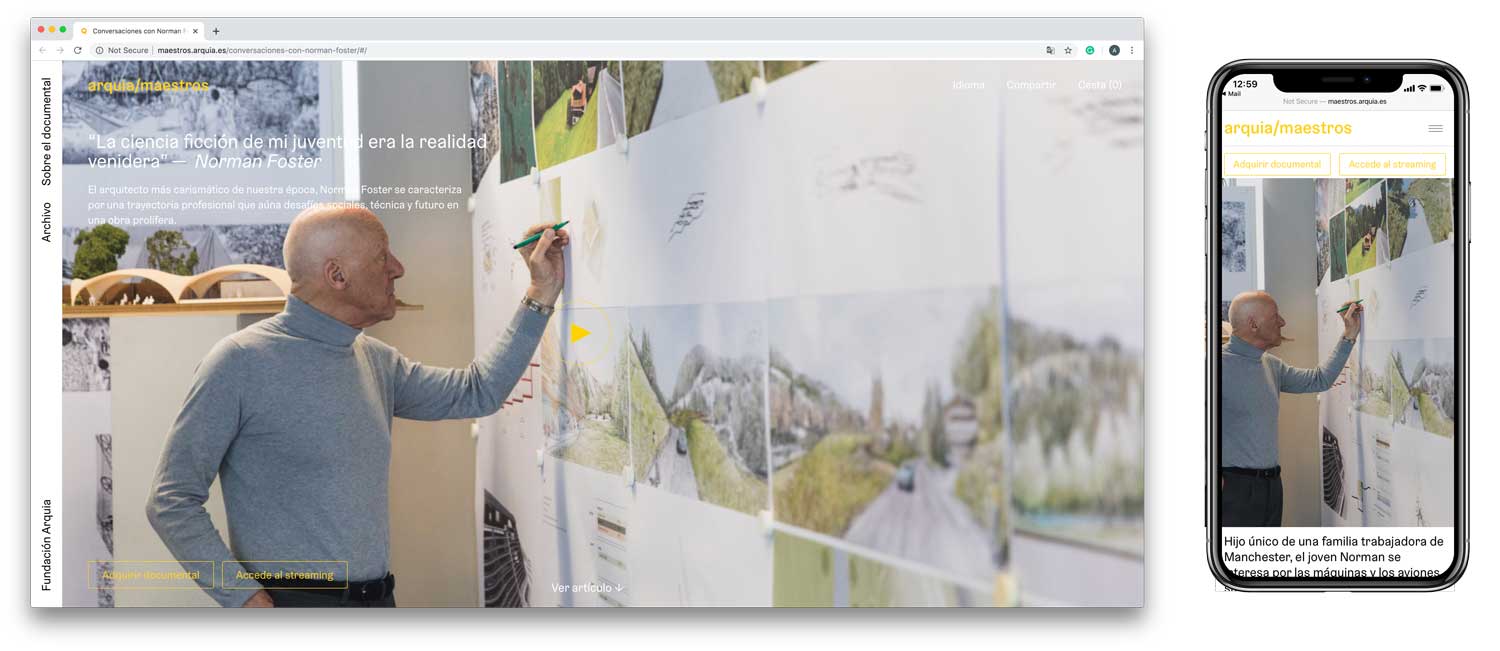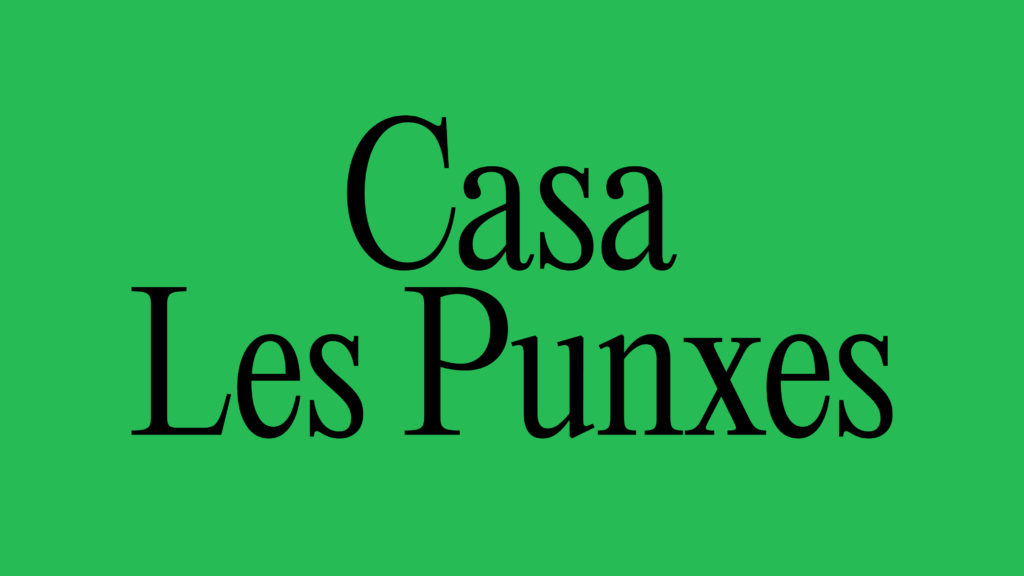Year: 2018
Tags: Art Direction and Design, Brand Series, Creative Direction and Filmmaking, Digital Activation, Strategy and Design Thinking
Lessons in native advertising
In order to help Fundación Arquia reach new audiences, strengthen the brand and position it at the forefront of contemporary architecture, we needed to develop a radical new approach to its communication strategy. Brands are increasingly realising that they need to take themselves out of their own environment to reach new audiences. Traditional advertising no longer works. Instead, companies are turning towards ‘native advertising’ – a type of digital advertising that matches the form and function of the platform upon which it appears. Content is only indirectly linked to a brand, but its coherence with the host platform means it is more readily absorbed and spread by consumers.
Fundación Arquia‘s objective is to promote and spread formative, ground-breaking and inspirational projects in the field of architecture, construction, design and urbanism. But to do this more effectively, a step outside its immediate environment was needed. We had already worked with the foundation on a number of projects to change the perception of architecture and highlight cross-industry expertise – this was taking their narrative into a new realm. With a fluid approach to communication, we decided to develop a digital series that could be used across multiple platforms, strengthening the brand indirectly by focusing on ‘native’, content-led communication.
“A documentary is one of the best ways to develop a brand narrative. Exploring the values and ideas of a “master” such as Foster is thousand times more interesting and engaging than saying to someone buy my products or services.”
Rafa Martínez, COO, Partner & Brand Strategist, Folch
Maestros: A cultural collection
Maestros is a cultural collection conceived and published by Fundación Arquia. The collection consists of a series of interviews which run through the careers of some of the greatest names in international architecture. The aim is that outstanding masters of our time can personally convey their thoughts and visions to future generations. Now was the time to bring the Maestros collection into a contemporary light.
A transmedia approach
We chose to rebuild Maestros as a contemporary series, so each interview could be seen as a standalone piece or as part of the wider collection. We had to rethink the way in which to communicate the series, reproducing the collection for digital via vimeo rather than television so that it could be disseminated further and shared by social media users. Each film is aligned with a microsite and supporting interactive booklet with additional information about the architect’s life and works.
“While I was with the production team recording the interview with Sir Norman Foster I realised how privileged our profession is. To be able to listen in the first person to the reflections of someone so essential to contemporary architecture as he expresses his thoughts and ideas was a privilege.”
Albert Folch, Creative Director & Founder, Folch
A biographical journey
The interviews, conducted by Luis Fernández-Galiano, follow scripts with a set structure: a conversation divided into six parts chronologically spanning the career of each master. The introduction, covering the period up until their architectural training, is followed by five sections that use their constructed work as a common thread, highlighting three projects in each section as milestones along a biographical journey. The documentaries were produced and edited by White Horse, Folch’s creative offset company, managing the production of our audiovisual pieces and photographic commissions.
Norman Foster: the future of architecture
Following the first successful publication of the first episode of the Maestros Series- a conversation with Renzo Piano -and after the rebranding of the idea, we then had to work with a new character: Sir Norman Foster, one of the brightest and most famous architects of our time. The production was part of the challenge because it included two shootings, one at the headquarters of his foundation in the Madrid, Spain and the other at the Norman Foster + Partners Studio in London, England. For Norman Foster’s case, we had the opportunity to make the documentary fascinating from its beginning: we were given access to the huge archive of documents, drawings, models and objects found in both locations.
The interview was recorded in the Foundation’s headquarters in Madrid, where we videoed the archives owned by the Foundation in parallel with Norman Foster himself. For the shooting, we were looking to get into their day-to-day work and create a comfortable atmosphere in which the people of the Foundation could keep working as normal. The idea was to capture the way Foster works and thinks within his actual surroundings and with all the material he has been collecting and creating throughout his life.
The second shooting took place in London, where we got the chance to film the busy Foster + Partners studio, with Foster in a real working environment, as well as documenting the city itself to complement the final documentary with b-roll. This resource footage of London was the perfect complement because not only did it demonstrates Foster’s close relation with infrastructure, but it also showed some of the buildings in the City of London designed by Foster himself. We were looking to transcend his ideas and thoughts, his inspirations, finding his essence and transforming it through the lens. With Renzo Piano we found ourselves in a Mediterranean villa, filled with bright colours, wood, and direct sunlight. On this occasion, the piece breathes Norman’s Foster character – sharp, clean and precise – steely greys and whites tones, against a soft and diffuse London light.
During the interview, Norman Foster, goes over his personal background, he talks about his inspirations and briefly, about his beginnings. After this introduction he brings up some of his most famous and relevant works, from Stansted Airport and The Millennium Bridge in London, to the Reichstag in Berlin and the Metro of Bilbao in Spain. All the works were chosen by the architect and interviewer Luis Fernández-Galiano. In the end, he looks to the future through some new projects by young architects that him and his team had chosen as interns. The 40 minute documentary is complemented with a booklet, that contains Norman Foster’s biography and an overview of his works, closing with his predictions and thoughts for the future.
During the process, Foster’s passion to communicate, to give back his knowledge of architecture to the society, was clear. As an important figure he holds an important informative role. For this reason, through his Foundation he encourages thought and interdisciplinary investigation to help new generations of architects, designers and town planners to plan for the future. He was conscious of the importance of audiovisual material, and is constantly creating audiovisual pieces about his recreations and mock-ups of his works with his own audiovisual team.
“One of the main objectives in redesigning the Maestros series was to leave behind the TV paradigm and take it into the documentary domain, where the final format that is adaptable, without letting the story and its character lose any identity. The way I understand the documentary is as a meeting point between the main character’s story and the personal experience that you gain from your journey through their ideas and their work. It is a portrait beyond that which the character explains.”
Pol Gonzalez Novell, Filmmaker & Partner, White Horse
Editing process: creating a visual experience
A huge amount of work went into the editing and post-production process. We wanted to edit the film in a way that didn’t simply follow the interview, but created a dynamic rhythm, dispersing powerful images and playing with light against a lyrical soundtrack. Rather than focusing on introductions and structured information, we created a visual experience where images were given as much importance as words. It was also important to factor in social media, so we edited a number of shorter clips portraying specific insights about each of the architect’s key works, as well as his most relevant topics. As well as the 40 minutes documentary, we produced two short clips -about the reichstag and Millenium Bridge-, two teasers and a “making of”.
Printed booklets that interact with electronic devices
Each monographic Maestros volume combines an audiovisual interview with a booklet specially written and illustrated by both the “maestro” and the Director of the collection. The booklets, designed by Folch, are cloth bound and finished with a stamped portrait illustration of the architect. We used this organic approach for the covers to give the piece a personal, human touch and to balance out the more technical architectural images of the interior. The texture of the cloth gives a feeling of quality and a tactile finish, while the warm colour unifies the collection and consistently defines the different chapters.
Each section is comprised of a mix of short texts and images. The design approach is representative of the subject matter; structured, clear, organised layouts, where images take a primary role and the typeface brings character to the overall design. We used Graebenbach, a grotesque typeface with interesting character endings and a sharpness which balances well with the fluidity and warmth of the hand drawn type. It is a contemporary choice with a marked personality, contributing to define the identity of the collection.
Translating the brand series onto a digital platform
The Maestros collection needed to be adaptable to nowadays society and for this reason, it is also available via a series of microsites. Each site corresponds with an architect, their interview and accompanying booklet. The interviews are available to purchase either via Vimeo or as a printed interactive booklet via the microsite, which includes an introduction to each documentary in English, Spanish and Portuguese. We wanted the design to remain consistent across the different platforms, so we used the same Graebenbach typeface for the web version. The logo is an adaptation of the Fundación Arquia logo, and the yellow is picked up in the navigation. The overall design allows the content – including gallery of images, video and articles – to be accessed in parallel, giving an editorial look to the microsites which, in turn, correspond with each other.

Sol Candela Alcover, Director of Fundación Arquia
What is the purpose of The Maestros series and what does it contribute towards the Foundation?
The purpose of the collection was to highlight well-known architects and important figures in architecture who could transmit their thoughts to the future generations, through an interview format. The conversations cover chronologically the itinerary of each of the chosen maestros.
Since its opening in 1990, which communication projects have been the biggest turning points for the foundation?
I could highlight three projects and moments:
- Arquia/maestros. Renzo Piano: On the one hand the Maestros interview format was reformulated – with a more intimate and personal filming in the architect’s home and studio, instead of on a television set – and on the other hand the product was presented under a new interactive format, more suitable for the audience to which it is directed to.
- Arquetipos, the digital magazine and Arquia Foundation’s blog: In 2016, the opening of this project was important because since then we made a link to other users who’s professions or disciplines are related to architecture.
- Web platform: Since 2019, the website has given us the flexibility in the communication of contents that we needed it.
What is the relationship between architecture and communication?
In the world of advertising, knowing how to transmit an idea to the client or to a target audience, is everything. In architecture, it works the same way. The main purpose of architecture and language is to communicate. The verbal and written language is usually clear and direct, but the architecture has greater freedom of interpretation.
What would you say are the biggest communication challenges for the next few years?
Reaching society through the experiences that architecture can convey and transform.

